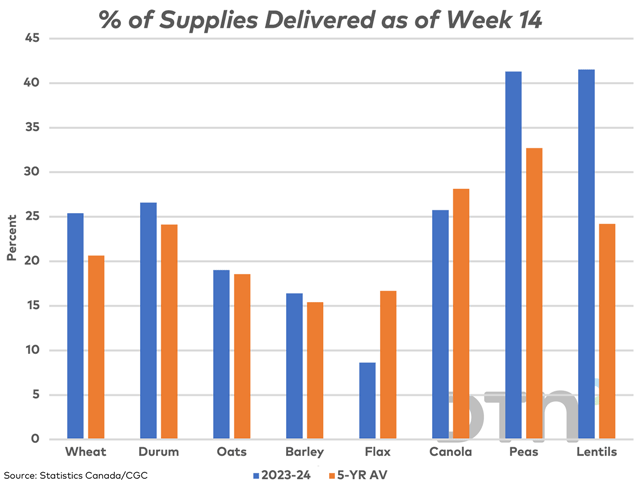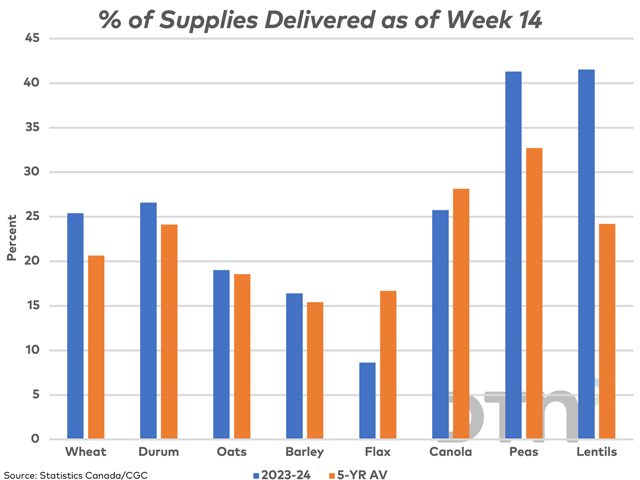Canada Markets
A Look at Producer Deliveries as of Week 14
As of week 14, or the week ending Nov. 5, the Canadian Grain Commission (CGC) reports producer deliveries of all principal field crops into licensed facilities at 17.257 million metric tons (mmt), down 6.2% from one year ago and 3% below the five-year average for this period.
This volume is larger than achieved in three of the past five years, while it is well-behind the 20.430 mmt reported for this period in 2020-21.
Looking across a number of select crops shown on the attached graphic, deliveries of wheat and flax are reported at a volume ahead of last year (not shown), while the CGC also reports deliveries of soybeans and corn in the west ahead of last year's pace, along with a year-over-year increase in canary seed and mustard.
P[L1] D[0x0] M[300x250] OOP[F] ADUNIT[] T[]
Despite a year-over-year drop in production and supplies of wheat forecast, producers have delivered 0.5% more than last year over the first 14 weeks of the crop year. At 4.6 mmt, producer deliveries of canola for this period are the lowest seen in 10 years.
When deliveries of the select crops are compared to average, deliveries of wheat at 16.9% higher than average, while deliveries of lentils are 3.2% higher than average.
The attached graphic shows cumulative deliveries as a percentage of available supplies, or Statistics Canada's July 31 farm stocks estimate plus Statistics Canada's estimated production. This is calculated for 2023-24 (blue bars) and the five-year average (brown bars).
As seen on the attached chart, deliveries of cereals, or wheat, durum, oats and barley as a percentage of the available supplies or grain available for delivery is higher than the five-year average (blue bars as compared to the brown bars). The same can be said for the volume of peas and lentils delivered, with deliveries substantially higher than average.
Also seen on this chart, the percentage of canola and flax deliveries are below the five-year average percentage.
Cliff Jamieson can be reached at cliff.jamieson@dtn.com
Follow him on X, formerly known as Twitter, @CliffJamieson
(c) Copyright 2023 DTN, LLC. All rights reserved.






Comments
To comment, please Log In or Join our Community .